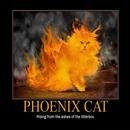"There is a possible seventh noble gas element. Ununoctium exhibits noble-gas-like properties, but it's all a bit iffy over a decade after its discovery. It has some odd relativistic properties that the other six noble gases don't exhibit, and it may not even be a gas at all! So a proposed seventh track between "Radon" and "Group Zero" was put on hold. It was briefly considered for addition as a bonus but it was decided that it would spoil the continuity of the album. Besides, it was a demo, not finished to the same standard as the others. Ergo it was deep-sixed."
 http://www.mikedickson.org.uk/noblegases/index.html
http://www.mikedickson.org.uk/noblegases/index.html
"...although ununoctium is a member of Group 18, it may possibly not be a noble gas, unlike all the other Group 18 elements. It was formerly thought to be a gas but is now predicted to be a solid under normal conditions due to relativistic effects..."
"...It is thought that similarly, ununoctium has a closed outer valence shell in which its valence electrons are arranged in a 7s27p6 configuration.
Consequently, some expect ununoctium to have similar physical and chemical properties to other members of its group, most closely resembling the noble gas above it in the periodic table, radon.Following the periodic trend, ununoctium would be expected to be slightly more reactive than radon. However, theoretical calculations have shown that it could be quite reactive, so that it can probably not be considered a noble gas."
 https://en.wikipedia.org/wiki/Ununoctium
https://en.wikipedia.org/wiki/Ununoctium





